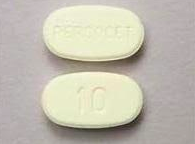
 BY SHERLY JOURDAIN
BY SHERLY JOURDAIN
On Aug. 11, 2017, Pres. Trump declared the opioid epidemic a national state of emergency. The Center of Disease and Control reports three out of five overdose deaths are opioid-related, and an alarming estimate of one in every four persons who are using opioids for pain management will struggle with addiction. In Rockland County, a combined 62 opioid-related deaths occurred in 2015 and 2016, according to a report by the county executive office. The Lexington Center for Recovery has seen an unprecedented rise in addicts seeking help from opioid addiction in its Methadone treatment program.
According to Director Barbara Tabala of the Rockland County Programming for Lexington Center for Recovery, “I’ve been in [this line of] work for 34 years…This has been the worst [case of increased] admissions…70 percent of our people are coming in for [opioid addiction].” Tabala states it is an epidemic affecting people of all races, socioeconomic status, gender, and ages. The public discussion about who or what is to blame continues as factors such as marketing campaigns of the pharmaceutical industry, prescribing practices of doctors, and coverage policies of insurance companies are scrutinized.
Opioid or opiates are highly addictive substances that derive from the poppy seed of the Opium Poppy plant. The drug latches unto what is also called the “opioid receptors” of the nervous system to relieve pain and regulates pleasure. Opiates are best referred to the all-natural, unprocessed drug directly from the plant such as morphine or codeine.
Semi-or fully-synthetic drugs are man-made to mimic the effects of opiates and are known as opioids such as OxyContin, Vicodin, and Methadone of which the CDC cites as the most involved in accidental prescription overdoses. Heroin is also a synthetic, opioid drug that the CDC reports a quadrupled increase in usage along with prescription opioid painkillers since 2010. It has been reported that most new heroin users disclosed to have abused prescription opioids prior to their heroin usage. According to Tabala, about 80 to 90% of opioid users at the Rockland Clinics of the Lexington Center for Recovery are seeking help with heroin addiction.
The director explains this could be attributed to the rise of prescription opioid addictions as the body adjusts to the chemicals, users advance to heroin for an enhanced euphoric feeling; Given the prevalence of the opioid epidemic, Tabala also comments that heroin addiction no longer carries the same level of stigma to users as it once did. The director believes a number of factors precipitated the epidemic including the mutually-beneficial, business relationship between the drug industry and insurance companies, “Insurance companies are colluding with pharmaceutical companies that’s not in the best interest of consumers.”
This relationship may have started in the early 1980s when the pharmaceutical industry started marketing pain as a symptom in and of itself that should be treated as a disease. According to Medical Director, Dr. William Greenberg of the Mental Health Association of Rockland County, “Pharmaceutical companies found a niche in offering new long-acting opioids, which they could reap substantial profits on as they were still on patent.
Recognizing that pain was still often under-treated, a public relations effort and lobbying backed by the industry even led the Joint Commission to identify pain as the ‘fifth vital sign’.” In order to assuage the public and doctors’ concerns of using prescribed narcotics for long-term pain relief, drug companies began inserting a 1980 letter written by Dr. Hershel Jick—misleading its conclusion that opioids are largely non-addictive— in advertisements selling opioid painkillers.
In his interview with the National Public Radio, Jick explains that the letter did not conclude opioids were not addictive, but that their analysis indicated opioids were not addictive to hospital patients with no prior history of addiction. Researchers say Jick’s letter was cited over 600 times by various sources but most failed to mention that the patients in Jick’s study were offered opioids in a controlled hospital setting for a brief period of time. They believe the misrepresentation of Jick’s 1980 letter gave fuel to today’s opioid crisis as it was over-cited in numerous sources during the introduction of OxyContin in the mid-1990s.
The well-concerted marketing campaign of pharmaceutical companies proved successful as doctors began prescribing opioids for more than several days. A length of time of which Greenberg states is usually unnecessary, “For other than unremitting pain from cancer, there is little evidence that writing for more than a few days of an opioid medication has added value; indeed, individuals may paradoxically become hypersensitive to opioids prescribed over a lengthy period of time.”
Greenberg expounds that unused opioid painkillers are at risks of being discovered by family members, friends, or young people of the population who are susceptible to drug addiction.
He also attributes the copious opioid prescription practices of doctors to the depersonalization of the patient-client relationship in modern medicine: “Added burdens of paperwork, insurance coverage problems, prior authorization problems, documentation for chosen metrics, have led to increasing rates of burnout among physicians: symptoms of burnout are now reported by approximately half of physicians.
In this atmosphere, the expediency of writing for pain medications for longer periods has become the norm.” Dr. Anna Lembke and author of “Drug Dealer, M.D.: How Doctors Were Duped, Patients Got Hooked, and Why It’s So Hard to Stop”, backs Greenberg’s analysis in an interview with Stanford University, “The biggest change in medicine, which has contributed significantly to the prescription drug epidemic, has been the mass exodus of physicians out of physician-owned practices and into integrated health care institutions.”
The author explains while doctors working for “health-care conglomerates” are part of a system that has the potential of improving health care services, it has been demonstrated to be nightmarish for prescription practices, as physicians are pressured by key performance indicators involving billing quotas.
The accusation that insurance companies are perpetuating the crisis, and placing profits above human lives stem from the common coverage practices that prefer opioids over non-addictive medications. This is due to non-addictive medications and treatments being generally more expensive.
UnitedHealth Care is the nation’s largest insurance provider with a tier cost that usually requires patients to try certain opioids painkillers first, as certain non-opioids medications are placed in the expensive tier group and are uncovered. Aetna is one of the insurance companies that responded to these criticisms by stating it has monitoring programs in place to watch doctors’ prescribing practices and the usage patterns of opioid patients for any possibility of abuse.
UnitedHealth Care maintains it has an appeals process in place for any customer who has been denied coverage for a non-opioid medication that they believe would be safer. Some companies like Blue Cross, Blue Shield conducted their own studies on the opioid crisis in which Blue Cross, Blue Shield focused on doctors’ prescribing practices and patients’ propensity toward addiction as the major factors for the rise in prescription opioid addictions.
On August of 2017, Rockland County announced its lawsuit against the pharmaceutical industry for its role in the opioid epidemic. It joins a list of counties such as Nassau, Orange, and Westchester who filed similar suits, and seeks to hold ‘big pharma’ accountable for marketing deceptions about the addictive nature of opioids. County Executive Ed Day maintains that the costs of the lawsuit will not be for taxpayers to bear, but rather the county’s attorneys will collect its fees from any awarded damages. The county has hired a New City law firm, Simmons Hanly Conroy, a highly-experienced legal practice in opioid litigation with local government and institutions as clients as well. If won, Rockland will seek damages for the cost it has had to sustain in the opioid crisis through medical and psychological treatments.
Though opioid addiction has claimed lives across racial, socioeconomic, and generational lines, Greenberg is particularly concerned about the plight of young people as they are getting introduced to opioids—particularly street opioids such as fentanyl— at a younger age: “The problem with young people [is that the] nervous system is still developing [and they] are often self-medicating unpleasant emotional states [such as] sadness, guilt, loneliness, social anxiety…if you keep relying on drugs, you develop a dependence.” In response to these concerns, a concerted effort is in motion to curtail the epidemic through education, regulation, and increased access to treatment.
On April 29, 2017, the county executive office provided free Narcan training to anyone over the age of 18 interested in learning how to administer the drug in an overdose crisis. State Senator David Carlucci hosted some of these events as well, and remains diligent in passing legislation and working with medical professionals to combat the crisis. Tabala informs that New York has instituted a prescription monitoring program or I-STOP in which doctors are required to confirm if a patient is prescribed opioids through another doctor in NY or out of state. Greenberg states, new available drugs such as “Buprenorphine (an opioid ‘partial activator’), Vivitrol (injectable naltrexone – an opioid blocker) are very useful developments” in helping addicts conquer their addiction.
Overall, Tabala foresees a possible decline in the opioid epidemic through meaningful regulations over prescriptions, increased mandatory training for physicians on the dangers of opioid addictions so to encourage safer prescribing methods, and increased opportunities to treatment.
Those seeking help for themselves or someone who is struggling with an opioid addiction may contact the Mental Health Association of Rockland County at 845-267-2172, ext. 205 or the Lexington Center for Recovery at 914.666.0191.

You must be logged in to post a comment Login